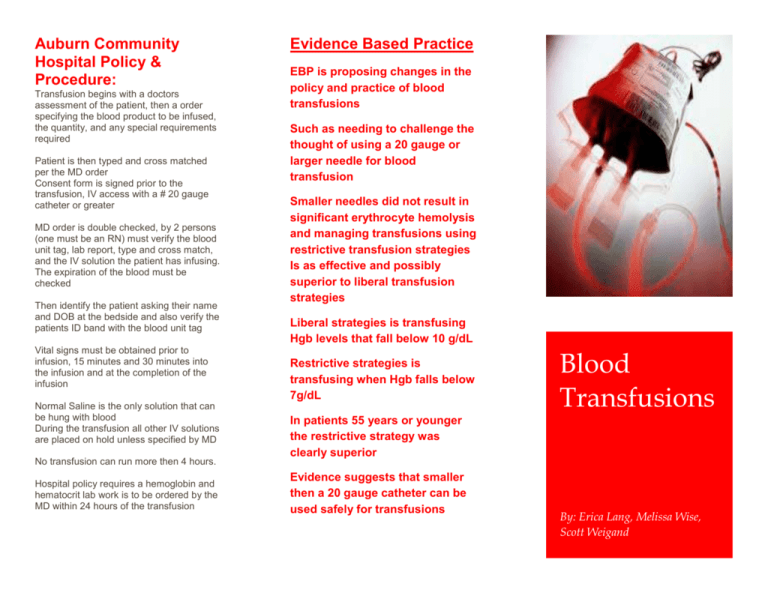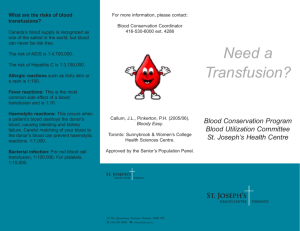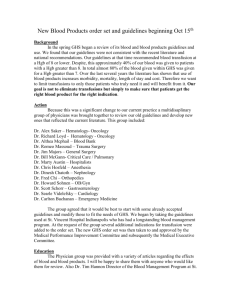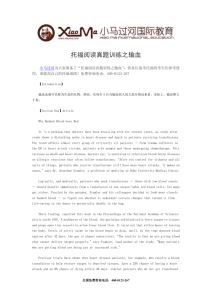Blood Transfusion Policy & Procedure - Auburn Hospital
advertisement

Auburn Community Hospital Policy & Procedure: Transfusion begins with a doctors assessment of the patient, then a order specifying the blood product to be infused, the quantity, and any special requirements required Patient is then typed and cross matched per the MD order Consent form is signed prior to the transfusion, IV access with a # 20 gauge catheter or greater MD order is double checked, by 2 persons (one must be an RN) must verify the blood unit tag, lab report, type and cross match, and the IV solution the patient has infusing. The expiration of the blood must be checked Then identify the patient asking their name and DOB at the bedside and also verify the patients ID band with the blood unit tag Vital signs must be obtained prior to infusion, 15 minutes and 30 minutes into the infusion and at the completion of the infusion Normal Saline is the only solution that can be hung with blood During the transfusion all other IV solutions are placed on hold unless specified by MD No transfusion can run more then 4 hours. Hospital policy requires a hemoglobin and hematocrit lab work is to be ordered by the MD within 24 hours of the transfusion Evidence Based Practice EBP is proposing changes in the policy and practice of blood transfusions Such as needing to challenge the thought of using a 20 gauge or larger needle for blood transfusion Smaller needles did not result in significant erythrocyte hemolysis and managing transfusions using restrictive transfusion strategies Is as effective and possibly superior to liberal transfusion strategies Liberal strategies is transfusing Hgb levels that fall below 10 g/dL Restrictive strategies is transfusing when Hgb falls below 7g/dL Blood Transfusions In patients 55 years or younger the restrictive strategy was clearly superior Evidence suggests that smaller then a 20 gauge catheter can be used safely for transfusions By: Erica Lang, Melissa Wise, Scott Weigand Why Administer Blood Products? Anemia is a sign of an underlying illness of condition. Nutritional deficiency Acute or Chronic blood loss Anemia of chronic disease Why Blood Management? Blood Management consists of: Hemoglobin value of 7 g/dL or less is commonly used as a guideline for red cell transfusions Prevention Early Identification Treatment of Anemia Decisions to transfuse is based on patients clinical status Signs and Symptoms reflecting the need for a transfusion Blood transfusions are one of the most commonly performed procedures . Dyspnea Orthostatic Hypotension Syncope Tachycardia Chest Pain. Types of Blood Products Whole blood Packed Red Blood Cells Platelets Fresh Frozen Plasma Cryoprecipitate Granulocytes.











